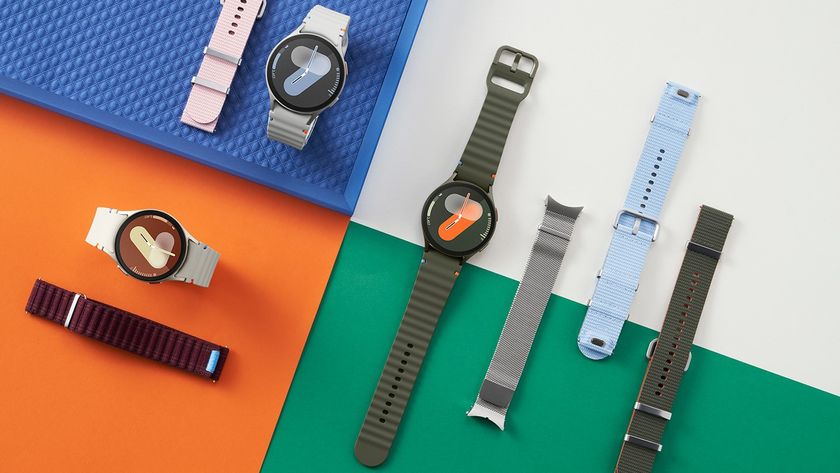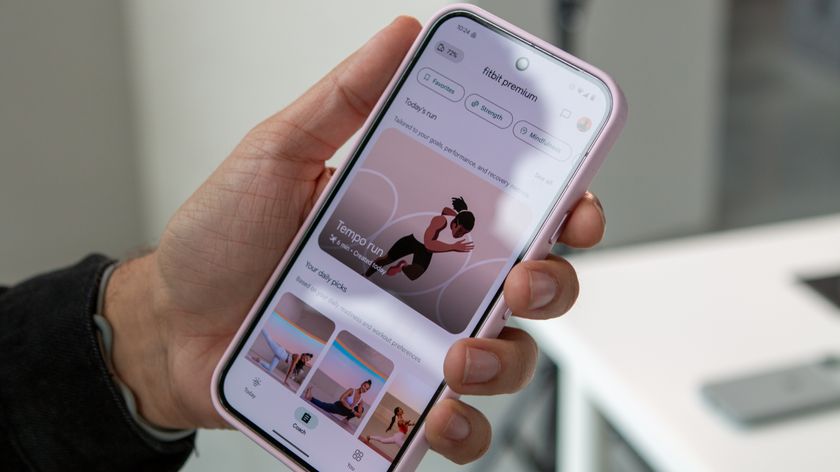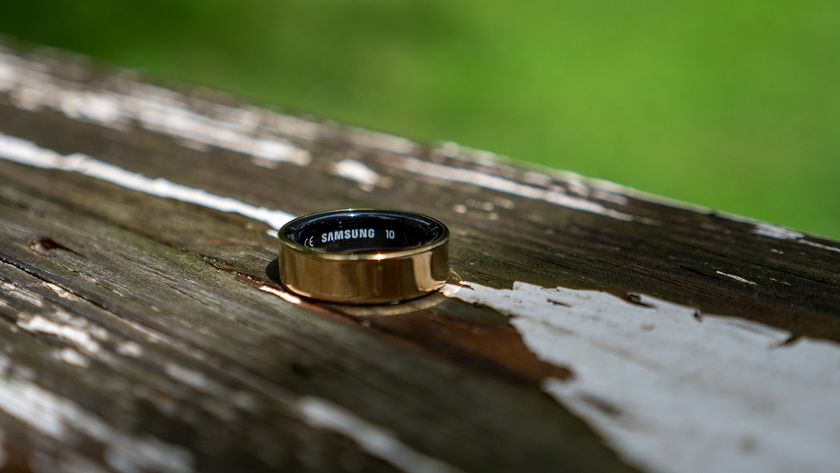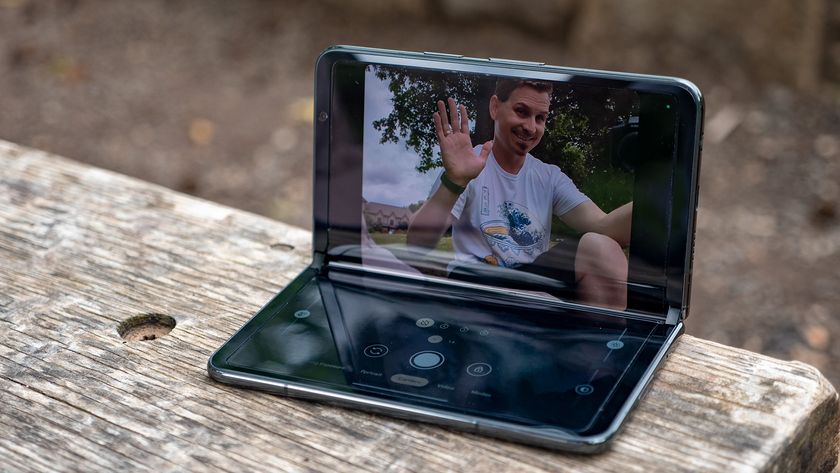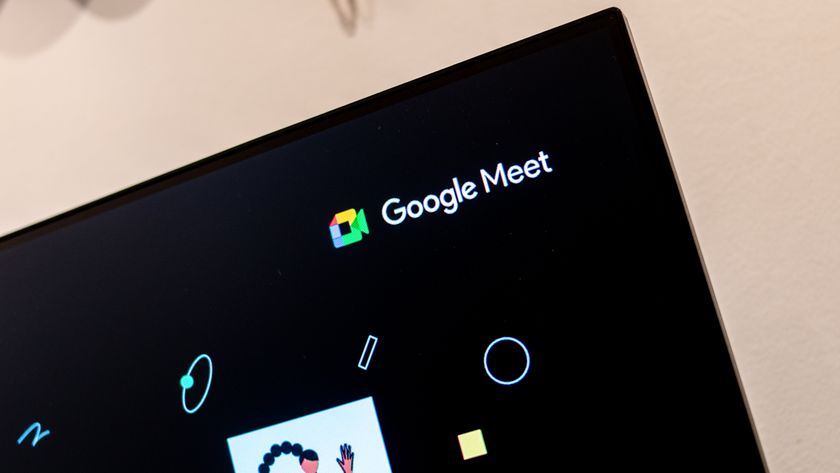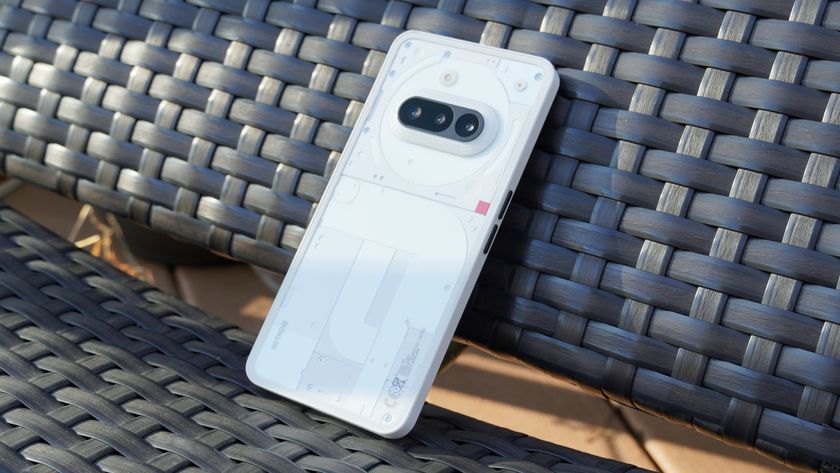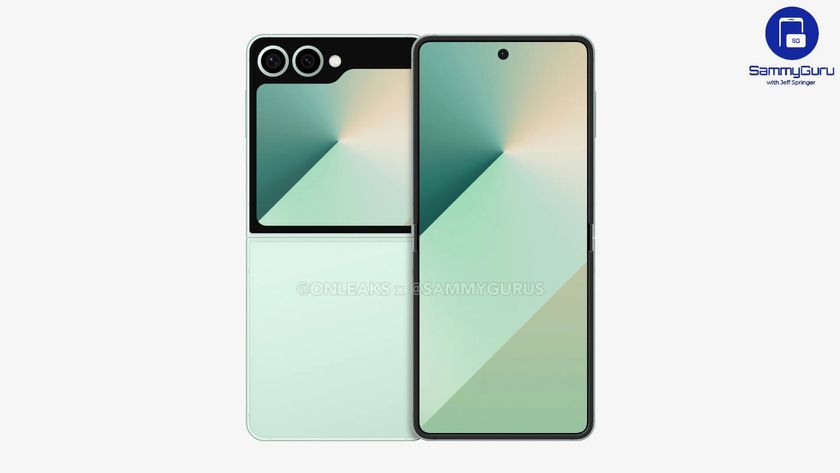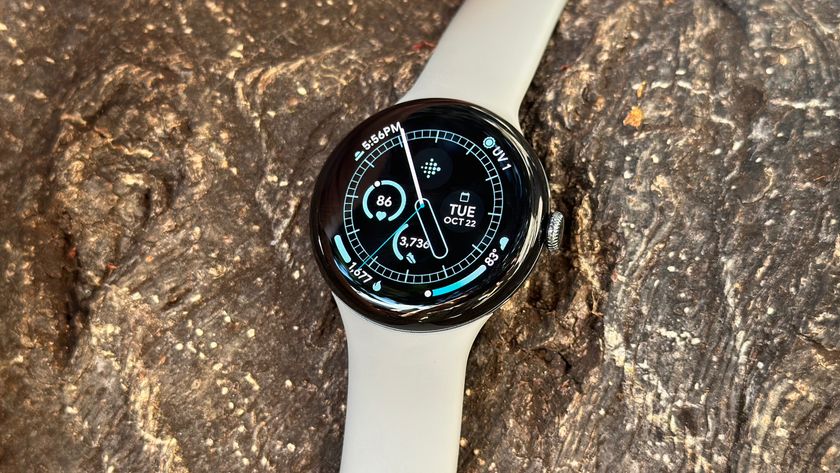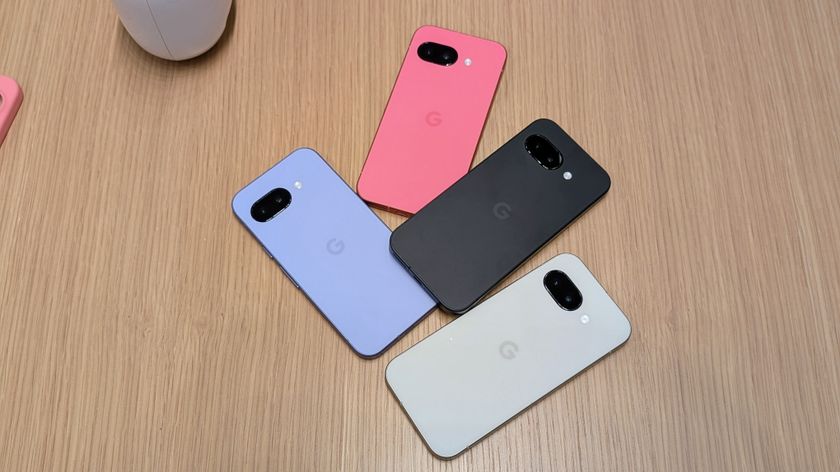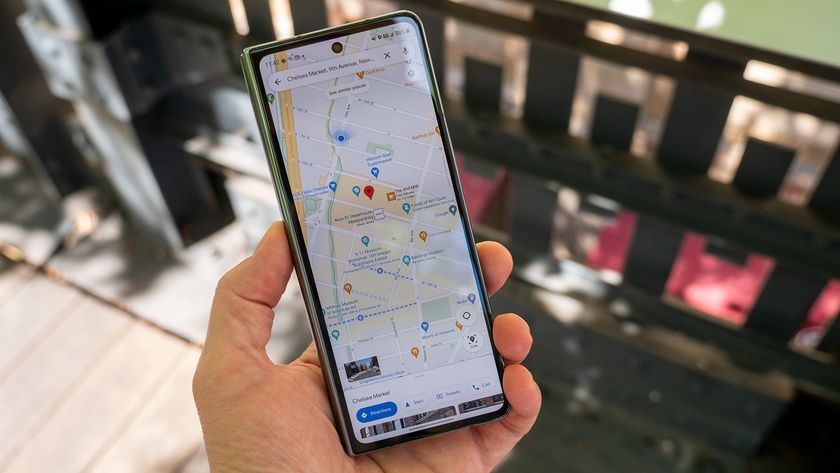Relax, your smartphone and smartwatch won't — and can't — give you cancer
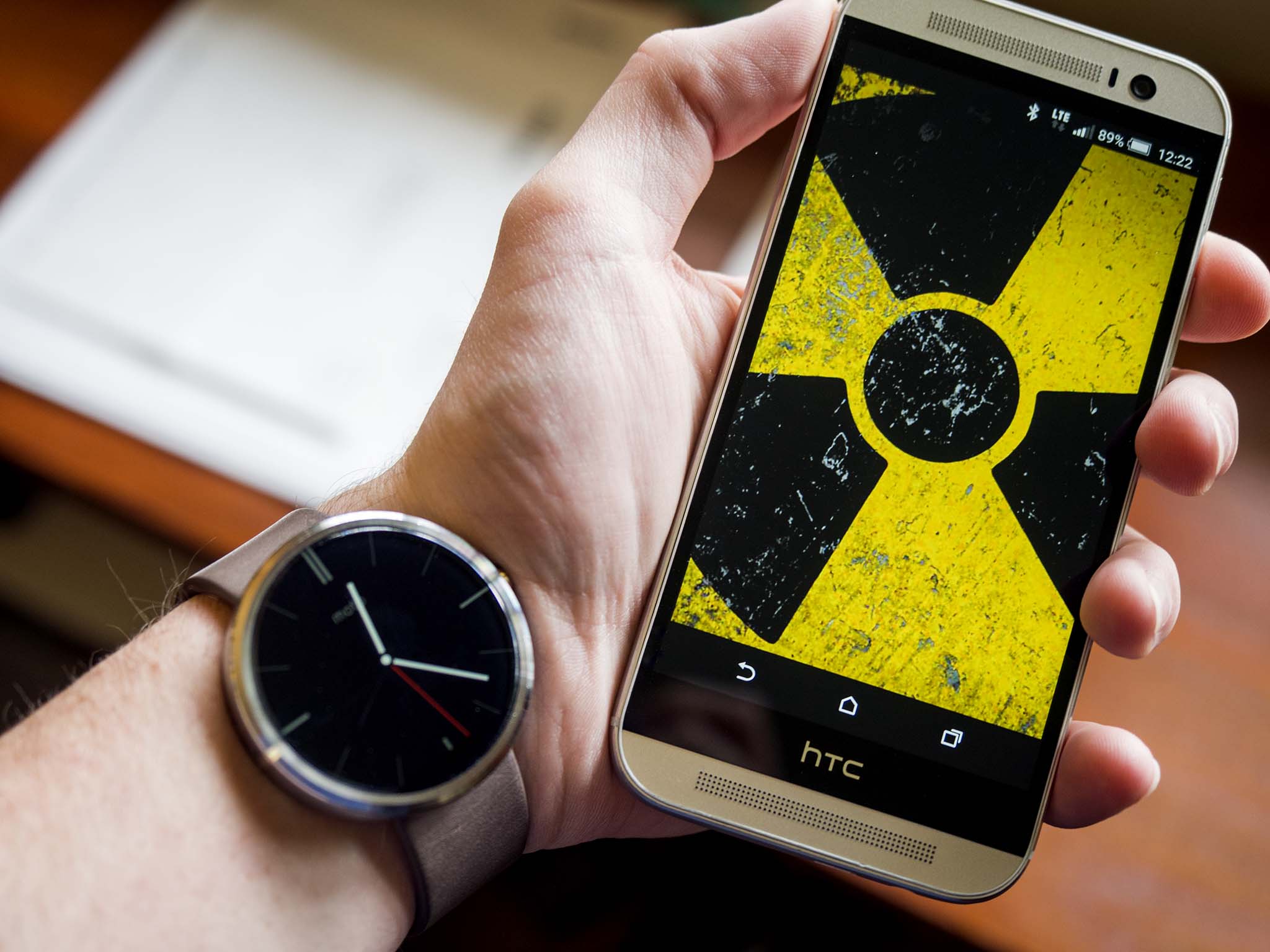
We in the Mobile Nations family tend to be tech-obsessed. We get the newest smartphones with the biggest batteries and most powerful radios, we strap on the latest in fitness bands and smartwatches, and we spend our days interacting with laptops and tablets and all other manner of technology. And rarely at the front of our minds are the potential health impacts of these devices. Sure, there are things to be said for our psychological state of mind, and our chiropractors probably have something to say about our heads-down smartphone posture. But neurologists, oncologists, engineers, and scientists universally agree: the radios in our gadgets cannot, do not, and will not cause cancer.
That doesn't stop otherwise reputable outlets from publishing fear-mongering pieces, like this one yesterday from the New York Times titled "Could Wearable Computers Be as Harmful as Cigarettes?" (and since retitled to the much less alarmist "Health Concerns in Wearable Tech"). It's not just embarrassing, it's also the latest in a string of pseudo-science quackery about technology and your health.
It's high time we cut down to the science about of radiation, biology, and technology.
Radiation, atoms, electrons, and you
Let's get this out of the way: it's perfectly reasonable to wonder about the health effects of something like a cellphone or smartwatch. After all, we are talking about devices with radios, and radios are designed to emit electromagnetic radiation. That's what the radio waves our devices use to communicate wirelessly are: radiation. Bluetooth, Wi-Fi, LTE… it's all radiation. Also radiation: X-rays, microwaves, sunlight, FM and AM radio. And also emitting radiation: Your TV, the electrical wires in your house, watches with tritium illumination, microwave ovens, the Earth itself.
Bluetooth, Wi-Fi, LTE… it's all radiation.
But not all radiation is created equal. There are many ways to break down types of radiation, but the one most important to this discussion is ionizing versus non-ionizing. Ionizing radiation packs enough energy that it is capable of stripping electrons out of the orbit of an atom, putting the number of negatively-charged electrons out of balance with positively-charged protons in the nucleus, making it a negatively-charged ion (ionizing it, thus the name). Non-ionizing radiation simply does not have that kind of power.
For an individual atom, losing an electron isn't a huge deal. It'll pick up another somewhere, or find another atom to share an electron with and form a molecule. But we humans posses very few lone atoms so unperturbed. Our bodies are composed of complex molecules constructed of dozens, hundreds, or thousands of atoms, including proteins, lipids, metabolites, and others. The atoms that make up these molecules are held together by chemical bonds — many were also ions at some point, and share electrons to balance out their positive and negative charges.
When electrons are stripped away from complex molecules, things stop working the way they're supposed to. Molecules fall apart, or they pick up new atoms to balance their charges and become a different molecule. In biology, the end result is usually that the cell stops working and dies. That's why when you see people afflicted with serious radiation poisoning that they're covered in sores and burns — it's mass cell death through disruption at the atomic level.
Be an expert in 5 minutes
Get the latest news from Android Central, your trusted companion in the world of Android
That complex molecule that makes us work
There's one incredibly important and incredibly complex molecule in our bodies that if affected by ionizing radiation can cause serious issues: deoxyribonucleic acid, or DNA. This complex molecule is the set of instructions for how our cells work. When a cell divides through the process of mitosis — this happens nearly two trillion times a day in the average human — the double-helix of DNA unwinds and splits down the middle to replicate itself, passing on that code. When an egg is fertilized by a sperm, the half-code that each cell provides is combined to create a new code.
A single DNA molecule is composed of 204 billion atoms. It's the most complex set of instructions that exists.
Things can and do go wrong with the DNA replication process. Most of the time when the process falters it produces something inert — a dead skin cell that joins the half billion others you shed off every day, or in the case of reproduction a dead zygote. On rare occasion something goes awry and a live but malfunctioning cell is the result. This is where both birth defects and cancers arise — a cell that technically works, but doesn't work how it's supposed to. Then again, things going "wrong" are also where we get the positive mutations that lead to long-term evolutionary changes in a species.
A single DNA molecule is composed of 204 billion atoms. It's the most complex set of instructions that exists, and that it's able to successfully replicate itself two trillion times over every day in a single human is really kind of incredible.
Ionizing radiation can strip electrons away from DNA. Most of the time this results in cell death — the DNA falls apart or the instructions it gives can't be executed, but sometimes, as with botched mitosis, you get a living but malfunctioning cell: a cancer. If that damage is done in just the right way, you get a cell that rapidly multiplies to become a tumor. Left unchecked, that tumor can spread throughout the body. It's not a great way to go.
Therein lies the concern about cell phones, computers, radio towers, and most other forms of human-generated radiation: could this be producing radiation that's going to damage our DNA, leading to birth defects, developmental issues in children, and cancers in adults? If you don't have a grasp of the electromagnetic spectrum, it's reasonable to be concerned that every time you use your smartphone that you're bumping electrons out of your DNA. But that's not happening. It's not possible by the laws of physics for that to be happening.
Ionizing versus non-ionizing radiation
The boundary between ionizing and non-ionizing radiation is fuzzy (different atoms ionize at different energies), but is generally in the extreme ultraviolet range of the electromagnetic spectrum. The spectrum is arranged in order of increasing frequency (and thus decreasing wavelength) and increasing energy. At the bottom you'll find the simply-named "radio frequencies", which includes everything from broadcast television to wireless networking to amateur radio. Radio encompasses the 3kHz to 300Ghz range. The upper reaches of radio includes microwaves, which include both Wi-Fi and the ubiquitous microwave oven. Past that you'll find terahertz radiation, infrared, and then visible light.
What we interpret as "light" is just another form of radiation, just a type for which we have specialized organs designed to collect (our eyes) and a brain with significant capacity designated to process. Visible light is just a narrow slice of the natural electromagnetic spectrum — 400 to 790 terahertz. The low end of reds is closest to infrared radiation, while the upper end of violets is closer to ultraviolet.
After the violet of visible light comes ultraviolet radiation (300 to 30,000 terahertz), then X-rays (30,000 to 30 million terahertz), and then gamma rays (greater than 30 million terahertz). The amount of energy carried by radiation increases linearly with the frequency. The most radioactive elements on the planet produce gamma rays — things that we generally consider to be radioactive like the naturally-occurring elements of uranium and potassium. We also use gamma rays in radiosurgery, focusing a few hundred low-power gamma ray beams on a target tumor. Each beam on its own is too weak to cause damage, but their combined energy at their intersection is enough to kill cells outright without the need for invasive surgery.
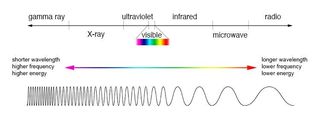
Our cell phones operate across a variety of radio frequencies, ranging from 700MHz up to 2.7GHz. That's well on the low side of radio frequencies. The most-coveted bands are on the lower side, take the 2008 U.S. 700MHz spectrum auction that saw AT&T and Verizon spend a combined $16.3 billion on licenses to operate in the spectrum as evidence of how valuable they are.
The lower frequencies are prized because of their ability to better penetrate structures like walls and their wider propagation in comparison to higher frequencies. A carrier operating on the 1900MHz band will need 2-4 times as many towers to cover the same area as one on 850MHz, and will still see worse indoor performance. This is partly why LTE running on 700MHz has been more successful and spread much faster in the U.S. than Sprint's failed WiMAX initiative running on their 2.5GHz band ever did.
Where low frequency radiation has a longer and harder to disrupt wavelength and lower energies, high frequency radiation's shorter wavelengths are more easily disrupted but also carries significantly more energy.
The reason that 700MHz can better penetrate solid materials than, say 2.5GHz, is due to that wavelength. A lower frequency has a longer wavelength, and is thus more easily able to pass through solid materials without being hindered by the atoms of said solid materials (when we're working at this atomic level, even solid concrete is really just a jumble of atoms with a lot of empty space between them — it's the strength of the atomic bonds that makes solid stuff solid, not the density). Higher frequencies are more likely to be reflected or absorbed.
The ability of radiation to pass through materials decreases as the frequency increases to the point of infrared and visible light. After that, the ability to pass through stuff increases rapidly, but for a different reason. Where low frequency radiation has a longer and harder to disrupt wavelength and lower energies, high frequency radiation's shorter wavelengths may be more easily disrupted, but it also carries significantly more energy. That's why we can use gamma rays for eliminating brain tumors without opening the skull — instead of slipping through like low frequency radiation, they punch through.
When a radio wave is absorbed, the energy imparted is so low the best it can hope to do is generate heat. Same goes for infrared and visible light. Ultraviolet light starts getting strong enough to really impact things, but it's not until we're talking about X-rays and gamma rays that are we start looking at ionizing radiation capable of causing severe damage.
Your microwave oven at 2.45Ghz will rapidly warm your food by imparting concentrated radio waves that are absorbed by the water molecules in it, thus generating heat. A microwave oven is actually a good example of the ability of radio waves to pass through materials — the entire cooking chamber is wrapped in metal that reflects the microwave energy back inside, including the door. While you can see through the door, the perforated metal screen inside the glass has holes significantly smaller than the 12.2cm wavelength of the 2.4GHz radio waves inside. Light can pass through, but microwaves cannot. You can see the same effect when listening to the radio while driving on a metal trussing bridge: AM radio has wavelengths ranging up to 500 meters and can't easily pass through the openings in the metal framework. Homes with walls made of plaster over a metal lath can see the same problem with all manner of radio frequencies — it's called a Faraday cage, if you're interested on going down another tangent of electromagnetic physics.
Radiation and your gadgets
Your smartphone's cellular radio emits radio energy at 700MHz to 2.5GHz. Wi-Fi operates on 2.4GHz and 5GHz. Bluetooth runs on the 2.4GHz band as well. Even the highest frequencies at which our gadgets operate carry 1/1200th the energy of visible light, and 1/9600th the energy of the 2400 terahertz needed to reach barely ionizing radiation. X-rays impart 12 million times as much energy as your phone or your watch, and highly damaging gamma rays at least 120 million times more energy. Granted, you're far more likely to encounter radio waves in your daily life than gamma rays.
For the the better part of the 21st century we've grappled with the question of cellular phones and the potential to cause cancer. And for the better part of the 21st century, doctors and engineers alike have assured us that there is zero scientific evidence to back up such assertions. A handful of studies have said that we cannot conclusively rule out wireless devices as emanating harmful radiation, couching their waffling in terms like "possibly carcinogenic," while not one rigorous scientific study has produced a shred of positive evidence that these gadgets produce harmful radiation, let alone cause cancer.
Calling cell phones "possibly carcinogenic" is like saying that I cannot conclusively rule out salmon as man-eating because salmon swim in the ocean and so do man-eating great white shakes, and even though I've never seen a salmon eat a human, they should be labeled as "possibly man-eating" anyway. Sure, both salmon and sharks are things in the ocean with fins, tails, gills, and teeth, but they're on very different ends of the spectrum of fish-like things in the sea.

The National Cancer Institute at the U.S. National Institutes of Health agrees that "there is no evidence from studies of cells, animals, or humans that radio frequency energy can cause cancer." The American Cancer Society says that "the RF waves given off by cell phones don't have enough energy to damage DNA directly or to heat body tissues". A 20-year study by The Journal of Epidemiology of cell phone-savvy Scandinavia found no connection or correlation between mobile phone usage and cancer. A 2011 study in Denmark by the Swiss Tropical and Public Health Institute compared users and non-users of mobile phones dating back to 1990 and found that "there were no increased risks of tumours of the central nervous system, providing little evidence for a causal association."
We live in an era where we've seen mice develop tumors from being force-fed too much peanut butter, but we've not been able to make radio energy cancers happen in any lab experiment or observe a statistically significant increase in the incidence of cancer in a public study.
Yes, your smartphone, smartwatch, wireless headphones, Wi-Fi router, smart TV, laptop, tablet, and every other wireless doodad in your house, car, workplace, and, well, everywhere, are producing electromagnetic radiation. But it's all operating in a frequency that's harmless. Literally, the worst your smartphone's radio can do to you, operating at full power, is to warm things up by a few degrees. But even then, the majority of the heat your phone's transferring onto the side of your face comes from heat generated by running the electronics and discharging the battery, not radio radiation.
Quackery of the highest order
We've been dealing with fears about cellular radiation for well over a decade now, propagated by science so poor we can't even call it shaky, weak anecdotal correlations, and a society that's become so obsessed with health that it's not even funny and almost funny at the same time. That's not to say that eating healthy, getting exercise, and breaking bad habits is a bad thing, but some of us have swung a bit too far on the pendulum to ultra-pure organic foods from heirloom seeds, carbon-positive living in homes made of recycled bottles, and hyper-intense workouts that leave you passed out on the gym floor.
Our age of health concerns is only compounded by the media, which too often is all too eager to pass along the next sensationalist story in hopes of drawing in more viewers or readers. There's no place in a 30-minute evening news broadcast for scientific analysis of the latest report that eggs do or don't cause cancer or heart disease or lupus, just as there's no time for explaining the difference between ionizing and non-ionizing radiation as it pertains to electronics.
Fears about cellular radiation have been propagated by science so poor we can't even call it shaky for well over a decade now.
Instead we get the latest report pushed out without any context, without any explanation of what was actually studied. Of course there is the natural aim of any media outlet to increase the eyeballs on their products. We do what we can to get more readers reading the stuff we've written. It's how we stay in business, and it's how we're able to generate more content like this.
These 60-second news reports never encourage any follow-up, and we're inclined to take the media (or at least our chosen segment of it) at its word on these matters. And if we're not so inclined there's an endless supply of online forums, blogs, and email chains to prey on our suspicions, insecurities, and naivety of things we don't fully understand. And there's nothing wrong with not having a complete grasp of how electronics and electromagnetic radiation work — I don't fully understand most of botany, soccer, the fascination with the Twilight franchise.
But then we're faced with insanity like real doctor turned famous pseduo-doctor Dr. Oz saying that carrying a phone in your bra can cause breast cancer, based solely on anecdotal evidence. Or yesterday's Times article by Nick Bilton about wearable technology and the risk of cancer.
It's the echo chamber repeating onto itself over and over again. As Gizmodo's Leah Finnegan noted in response to the Times editorial, the Dr. Joseph Mercola that Bilton's piece hinges on runs a website with insane proclamations such as fungi and anti-perspirants causing cancer or that steroids, stress, and poor nutrition are the cause of AIDS, not HIV. Bilton, meanwhile, calls Mercola "a physician who focuses on alternative medicine and has written extensively about the potential harmful effects of cellphones on the human body."
Mercola is also anti-vaccine and, paradoxically for somebody who claims to be concerned about the radiation our smartphones produce, pro-tanning bed. Though it's worth noting that his website, Mercola.com, sells tanning beds, vitamins, and other pseudo-medicinal cure-alls with no scientific basis to the tune of around $7 million a year.
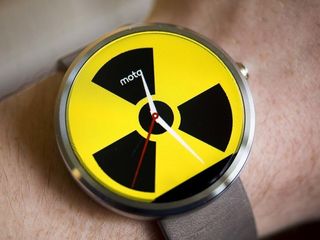
The last peak of the "smartphones cause cancer" fear-mongering was a few years ago, though that hasn't stopped both the legitimate and illegitimate media from pushing report after report after report in hopes of capturing some sort of viral headline magic. Which is how we find ourselves with headlines today asking "Could Wearable Computers Be as Harmful as Cigarettes?"
That headline's a small work of brilliance. "Wearable computers" is vague enough, but it's clearly meant to capitalize on the rising attention being paid to the Apple Watch. The Apple Watch isn't the first smartwatch by any stretch, it's bound to launch wearable tech into the mainstream, just like the iPad, iPhone, and iPod before it did for tablets, smartphones, and MP3 players. It also evokes thoughts of Google Glass — a radiation-spewing computer that you strap to your face.
"As harmful as cigarettes" is another genius choice — we've been told for decades by the media, government, and doctors that cigarettes are bad for your health; they cause cancer, chronic lung disease, make you smell bad, and all other manner of nastiness. It's been an effective public health campaign that's seen adult cigarette smoking rates in the U.S. drop from 42% in 1965 to 18% in 2013. That the smartwatch you've been eyeing might be as likely cause cancer as the vilified cigarette, that's some intense imagery. It's on par with comparing an opposition politician to Saddam Hussein (though not quite as bad as a Hitler comparison).
The last bit of brilliance is phrasing that headline as a question. Could smartwatches be as bad as cigarettes? It immediately drags back up the fears of those that questioned the safety of their cellphones years back and still have lingering doubts today. It's an excellent bit of fear-mongering and clickbaiting. As a fellow writer I tip my hat, impressed by the craft and by the gall to put something so purposefully and outrageously inflammatory out there. As somebody who cares about technology and science and education, I'm more than irritated to see such a headline (much less the rest of the article), and am only barely assuaged by the decision of some Times editor to change the headline to the less sickening "The Health Concerns in Wearable Tech".
It's an excellent bit of fear-mongering and clickbaiting. As a writer I tip my hat, impressed by the craft and the gall. As one who cares about technology, science, and education, I'm more than irritated.
That we're facing the same already-answered questions about smartwatches as we did with smartphones is both aggravating and a testament to the strength of our technologies and associated marketing. Open the Apple Watch page on Apple.com and you're presented with its beauty, precision, some of the cool things it can do, and the various models it comes in. Nowhere does it say that it connects to the iPhone with Bluetooth and Wi-Fi. Same with Google's Android Wear page; Microsoft's page on the Microsoft Band buries that it connects over Bluetooth under "See more features and specs".
What specific technologies a smartphone or wearable uses — the radios, the processor, the RAM — is becoming less and less relevant to the average consumer and the marketing of these devices. We live in a time where consumer technology has become so powerful and seamless that for most people it simply doesn't matter what's inside their phone or smartwatch, so long as it works. As it really should be.
But because it's not important to them, it means that they don't know. That's lead to situations like having cars that are so advanced and refined that 99.9% of the time they just work so long as you make sure it's maintained and fueled, but when something goes wrong you have no idea where to start to fix it. And it also means that we have smartphones loaded with buzzwords like octa-core and XLTE and QHD without any real idea what that means. And when we don't know what it means, that opens a void for charlatans, fear-mongers, and opportunists to step in and "educate" us on the supposed dangers of what we had been assuming was safe.
They work smartly to promote their agenda. Things like highlighting studies that hedge around the possibility of cancer, follow that with a mention that there are reports that stand in opposition and note that "some of this was partly funded by cellphone companies or trade groups", and then follow with a set of reports that don't fit that criteria but still refute the main claim of the article. That sort of ordering — saying that some of the opposing reports may be tainted by special interest and then offering up opposing reports that weren't sponsored in such a manner — is specifically designed to acknowledge the existence and awareness of statements to the contrary of what you're trying to promote while simultaneously undercutting it by association.
What's the bottom line here?
When you get down to it, there's little-to-zero scientific evidence that cell phones, smartwatches, face-mounted computers, laptops, tablets, or anything else generating electromagnetic radiation at less than 2400 terahertz — i.e. not ultraviolet, x-ray, or gamma rays — is going to give you cancer, cook your testicles or ovaries, or otherwise mess with your body.
If all of this still worries you, there are things you do to lessen your exposure to harmless cellular radiation. By virtue of how radios work, it is emanating radio waves in all directions, and far more of it passes through your head when on a call than what actually gets to the nearest tower. Use speakerphone, use a Bluetooth headset (that 30-foot range needs far less power than the possibly miles to the next tower), plug in a wired headset, or just use messaging and never talk on the phone. That'll reduce your brain's exposure to non-ionizing radiation by a bit, sure.
If you really want to get away from it all, there's the United States National Radio Quiet Zone, a 13,000 square-mile box (imagine two New Jerseys to get that approximate area) straddling the border between Virginia and West Virginia. It's used for scientific and military radio research and has very tight restrictions on the use of radio frequencies by civilians. Wi-Fi, cell towers, and all but one radio station aren't welcome in the NRQZ. If you want to escape the evil cancer-causing cell phone and smartwatch, this swath of the Virginias might be your best bet.
That's not to say that all this technology hasn't had an effect on our health: it's helping us to be more in tune with our bodies than ever before.
That's not to say that all this technology hasn't had an effect on our health: it's helping us to be more in tune with our bodies than ever before. Devices like the Jawbone UP24 track our movements and our sleep, waking us at the optimal time. Apple's ResearchKit is poised to spark a revolution in remote diagnosis and medical study. And practically every major smartwatch these days packs a heart rate monitor. We're able to collect more data than ever before, and that data can help us and our doctors make better decisions for our continued health.
For all the positive affects, there are negatives, though they are mostly psychological of societal. Go out to a restaurant or bar and you're bound to see at least one family sitting at the table, all pecking away at their phones instead of talking to each other. Being more connected than ever means it's harder for office workers to escape their work when they go home; they're more productive, but it's also harder to relax from the stress of work when it's following you wherever you go. And the arrival of social networks like Facebook and Twitter have made it possible to keep up with your friends — the important ones and just casual acquaintances alike — without actually having to interact with them. For as connected as we are today, many are at risk of becoming more disconnected than before.
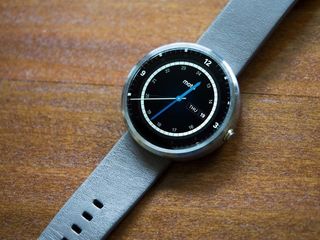
On the flip side, this tech does make it easier to get connected and stay connected with people from far-flung locales we never would have met before. I have this very job because of this confluence of technology, and I didn't meet any of my coworkers in person until I'd been at it for over two years, and I consider some of those I've met through the internet to be among my closest friends.
Cigarettes were a major part of Western society for half a century before the first studies linking smoking and lung cancer were published, and it took decades of effort to publicize the health dangers and start crafting and enforcing legislation for the greater good. Mobile technology, however, came into being in an era of regulation. There have long been publicly-set maximum allowable Specific Absorption Rate set by the FCC, set at 1.5W/kg (the Samsung Galaxy S5's SAR rating is 1.2W/kg, the iPhone 6 is 1.18W/kg). Mobile phones have been scrutinized from all angles pertaining to health since they first hit the scene, with no ill effects found.
We'll say it one more time: there's no rational evidence that smartphones, smartwatches, or any other consumer gadget you guy is producing radiation that will give you cancer or cause any other health malady. To suggest otherwise is just bad science.
Derek Kessler is Special Projects Manager for Mobile Nations. He's been writing about tech since 2009, has far more phones than is considered humane, still carries a torch for Palm (the old one), and got a Tesla because it was the biggest gadget he could find. You can follow him on Twitter at @derekakessler.

